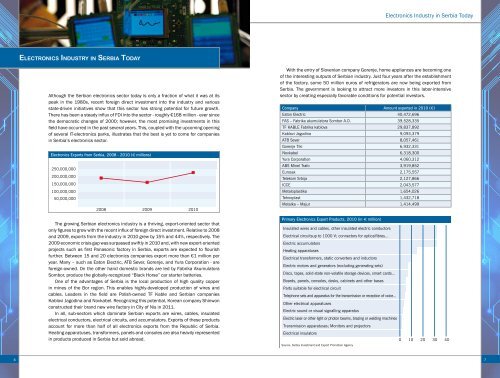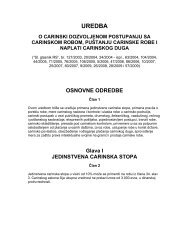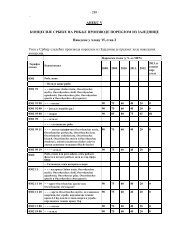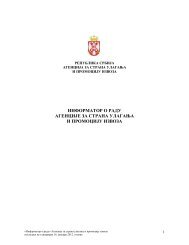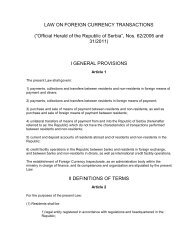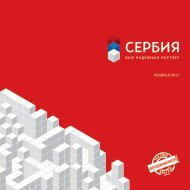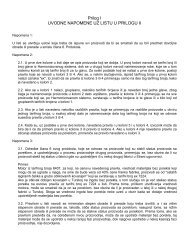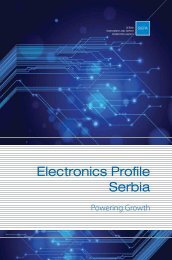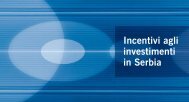Electronics Profile Serbia - Siepa
Electronics Profile Serbia - Siepa
Electronics Profile Serbia - Siepa
- No tags were found...
Create successful ePaper yourself
Turn your PDF publications into a flip-book with our unique Google optimized e-Paper software.
Tradition of the <strong>Electronics</strong> Industry in <strong>Serbia</strong>Nikola Tesla<strong>Serbia</strong> is home to a rich tradition in the electronics industry, butthe story of this field in our country begins with Nikola Tesla, oneof the greatest pioneers and inventors in the field of electricity.Of his countless discoveries and contributions to science, Tesla'smost notable achievements include a forerunner to commercialelectricity, the alternating current (AC) system and important workleading to the invention of wireless communication and the radio.His colorful personality and groundbreaking achievements haverightfully been immortalized in science and popular culture alike,and it comes as no surprise that he is considered by many as themost important <strong>Serbia</strong>n of all time.<strong>Serbia</strong>’s electronics industry dates back to the post World War II period when smallscaleof manufacturing of radio devices began throughout the former Yugoslavia. Themain production centers of the electronics industry were in Slovenia and especiallyin <strong>Serbia</strong>. The biggest companies in this field were Iskra Kranj, Rudi Čajevac, RIZ and<strong>Electronics</strong> Industry Niš (EI Niš for short). These companies grew to become especiallylarge in the 1960s and 1970s. EI Niš was the largest of these: at the height of thiscompany’s peak it employed 28,000 people in over 50 factories throughout theformer Yugoslavia.The assortment of electronics products manufactured in <strong>Serbia</strong> grew as quicklyas the industry itself: Starting from the immediate postwar period of radio deviceproduction, companies in Yugoslavia moved into manfucturing consumer electronicsin the 1960s. In the subsequent decade, electronics production was also heavilyfocused on supplying the military. The 1970s also saw a rapid expansion in electronicsexports from Yugoslavia.This industry reached its peak in the 1980s: During this decade, Yugoslavia’selectronics industry was a $1 billion sector that employed around 100,000 people.About one quarter of these were employed in cutting-edge research and development.Companies in <strong>Serbia</strong> alone accounted for about half of the Yugoslav industry’sproduction and employees at this time. Every major foreign electronics company hadrepresentative offices in the country, while many firms worked under license to foreigncompanies. EI Niš produced television sets in cooperation with Philips. Manufacturersof electronic components for the military industry did so in accordance with standardsemployed in the United States.As was the case with most sectors, the 1990s in <strong>Serbia</strong> marked a period of sharpdecline for the electronics industry: The political problems and economic sanctionsimposed on <strong>Serbia</strong> during this decade had catastrophic consequences for the oncethrivingsector. By the mid-1990s, the size and profitability of <strong>Serbia</strong>’s electronicsindustry was less than 10% of what it was in the previous decade. The industry waslimited to serving only the <strong>Serbia</strong>n market. Reduced profits prevented local companiesfrom investing in new technologies.5


